
..........................................................................................................................................................................................................
happy anniversary (sort of)
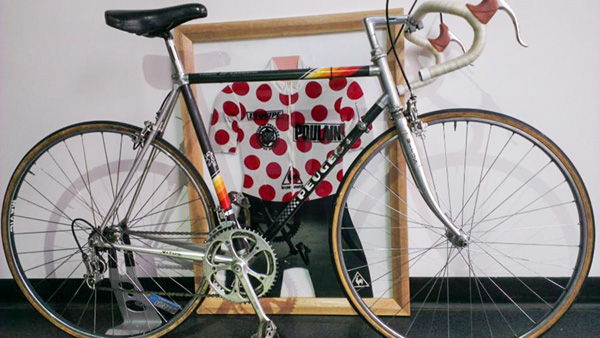
at the risk of being parochial, prejudiced and downright repetitive, despite sir bradley's historic victory in the 2012 tour de france, followed last year by that of chris froome, there were two historic moments that took place in uk cycling nearly thirty and thirty-one years ago.
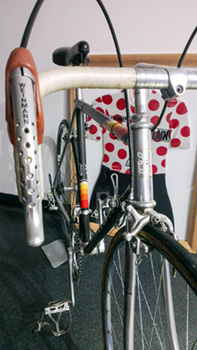
though it's undoubtedly splitting hairs to point out that wiggo was born in gent and froome in kenya, the first british/scottish rider to take a mountain stage in the tour and follow it with a fourth place and king of the mountains jersey the following year, was born in glasgow. robert millar raced very much as an individual; not given to suffering fools gladly and rumoured to once have had a scary haircut to stop him from going to discos when he should have been taking things more seriously. he was one of the last of the mavericks. determined to become a top cyclist, no matter the odds stacked against a brit doing so, robert not only won the tour's polka dots, he did the same in both the vuelta and giro, coming perilously close to the top of the spanish podium in 1985.
both bradley wiggins and chris froome have taken victory using the very best in the way of equipment, with state of the art frames from pinarello, shimano's electronic shifting and the latest in cycling apparel developments. that doesn't totally separate them from the opposition, for they too have access to very similar technology, but it is all a far cry from what was available in millar's day. concrete evidence of this has recently been celebrated by the surfacing of reputedly millar's kom winning bike in billy bilsland's cycle shop sited just past the railway bridge, near glasgow green. robert's polka dot skin suit has long been displayed on a wall inside the shop, offering millar fans the world over, a place of pilgrimage. that it will be now joined by a carbon/alloy peugeot frame will surely only cement bilsland's on the international cycling map.
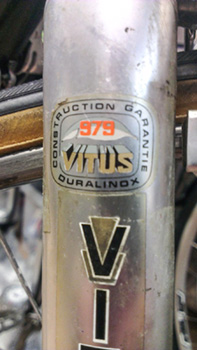
the story goes that the bicycle was sold to a collector by millar, but as robert says "Most of the TdF bikes would have been allocated to someone before the end of the Tour, especially if you were a stage winner or star of the show. I know for a fact that all my bikes from the '84 TdF were sold before the end; one guy connected to a team sponsor told me he had bought one of the two carbon frames that were used. I've no idea if he got the stage winning bike or not." as robert also metioned, the same arrangement exists today. teams sell off bikes and equipment; if not, they go back to the sponsors/suppliers.
it doesn't take a technical genius or bicycle geek to realise that there is a substantial difference between today's equipment and that regarded as top of the tree in the early 1980s. "Those carbon frames were as light as you got at the time, lasting about three months before the stiffness went off and they got slightly whippy. But even that wasn't a problem. It's not like they became dangerous, just a bit more comfortable." robert pointed out that in the accompanying photos, the top tube decals are missing. if it was one of the bikes he used, there would be his name or initials on it somewhere. however, "Bars and stem look like Cinelli 64s, so they look right, as does the Benotto tape. Weinmann brakes with Campag blocks. I would have had alloy toe-clips and titanium axle pedals, but quite often those details went missing before being passed on."
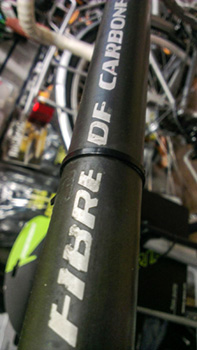
in common with the weight-weeniness that is a part of every pure climber, the bike features only one bottle cage. displaying a sense of recall that seems little short of uncanny ("I might have (had) OCD") he pointed out that the tyres would have been clement tubs; yellow label silks for the real stages, green label silk for the mountain-top finishes, always assuming it was possible to have a bike change just before the finish. in the time-trials, the team used dugast track tubulars.
nowadays, while bradley and chris both have use of the finest electronica shimano can provide, millar and team-mates were on mechanical and slightly industrial simplex. "The front changer wasn't great, flexing because it was plastic bodied, so you had to use it with a bit of care. It wouldn't change under load.
"The rear changer was interesting. It was also plastic bodied, but instead of using the steel jockey wheel cage that it originally came with, the mechanics fitted the cage from the all-alloy model in order to make it as light as possoble. In that combination, it was slightly lighter than the all alloy model." (however, robert did point out that the rear mech on the bilsland bike is in fact, the all-alloy model).
the differences were not, however, confined to gear shifting. one of the components to display quite substantial improvements in the intervening thirty years are race quality wheels. nowadays it's not at all uncommon to see wheels with fewer spokes across both wheels than robert rode on one. and there are not many teams still employing alloy rims, with carbon fibre much more in evidence and favour. "Those wheels look like the standard 32 or 36 spoked wheels, built by the team mechanics. A normal race would have me using 32 spoked wheels, 36 for rough stuff and mountains, while smooth flat would have seen 28 spokes for the lighter riders. Like me."
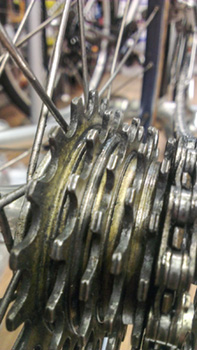
aside from decals on the top tube often identifying both the rider and his nationality, riders from all of cycling's various eras have personalised their machines, not so much from an aesthetic point of view, more from the point of personal comfort. sponsorship was perhaps less prominent as is the case nowadays, but it was still in some cases, necessary to toe the line by disguising an un-sanctioned change. in robert's case, the saddle was one of those features, pointing out "I noticed there's a Selle Royale Turbo saddle fitted. It must have been one of the periods when I tried them; maybe it was a prototype of some sort or the team bent my ear. Normally I would have used a San Marco Concor, with careful use of stickers or marker pen if it wasn't a supplied part."
robert's career continued through to the ill-fated le groupement of 1995, saved by his winning the british national championship the same year. through subsequent years, he rode a wide variety of different bikes, including gazelles, lemonds and latterly, a celeste bianchi, yet through all those twists and turns, he can still recall just what those bikes were like "Yeah nice light bikes, as light as you got at the time and then pared down with alloy and titanium where possible, like stem bolts, brake pivots and chainwheel bolts. In fact anything that didn't need to be steel wouldn't have been.
"I think that's called marginal gains now."
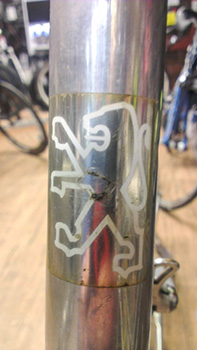
i did point out to robert that the best i could remember from 1984 was the birth of my daughter. i sure as heck can't remember how many spokes were on my wheels, or indeed, what gears were hung about its heavy steel frame, at which point, he went into overdrive. "The gearing would have been 42/52 and 170mm cranks; Stronglight. Of course the 41 inner Campag ring that I procured from the rep. at the Worlds one year and used quite often, would never have been passed on to the commoners.
"Selle Italia saddle would have been set up to be level , San Marco Concor was set at 3mm down at the front .
"Brake lever height probably set at straight along the bottom edge of the bars to the tip of lever . There was a trend to cut the last 20mm off the end of the drops on Cinellis, (something) I never did, coz it looked naff and your hand slipped off the end on big impacts. Tyre pressures? 7bar for the dry, 6.5 in the wet.
"Full alloy freewheel on mountain and TT stages. They made a slightly different noise to the normal all-steel freewheels. You could get away with alloy sprockets on the last two places on a steel body, but any more than that and it changed really poorly. And the unseen part of the seat post was cut down. No good taking two extra inches of alloy up and down mountains."
i did ask.
though i cannot deny a huge dollop of personal prejudice, i think it a marvellous testament to the place robert millar continues to hold in the modern day cyclist's psyche that the surfacing of his bike from 1984 still makes headlines in the mainstream cycling press. many current day riders who weren't even born when robert nabbed those polka dots in 1984, still cite him as a major influence, and he most certainly brought a substantial number of scots into the world of cycling, self included.
thanks to robert millar for help with this article. his tdf bike will be on display in billy bilsland's cycle shop at no. 176 in glasgow's saltmarket, near glasgow green. photos from road.cc
wednesday 15 january 2014
 ..........................................................................................................................................................................................................
..........................................................................................................................................................................................................